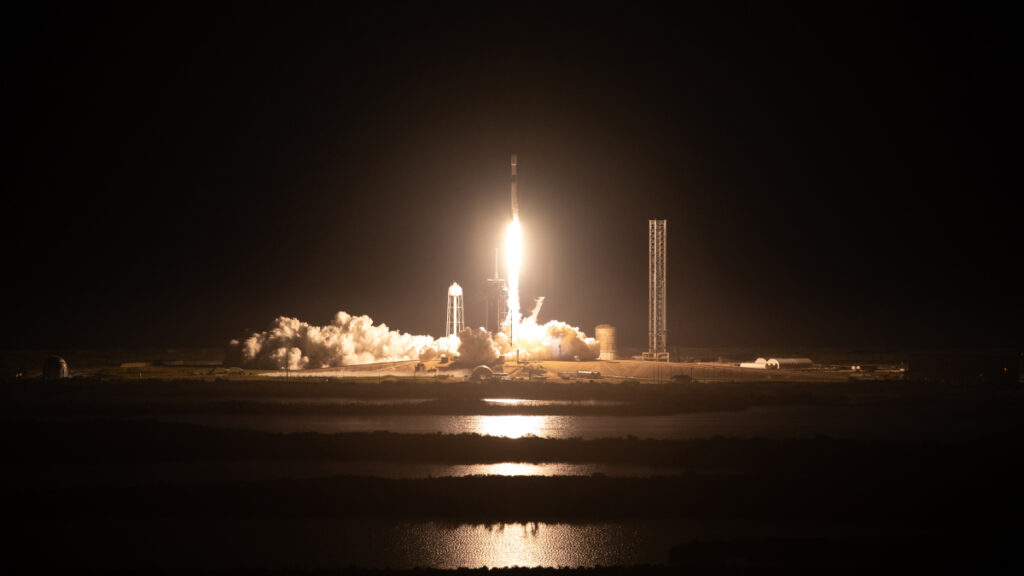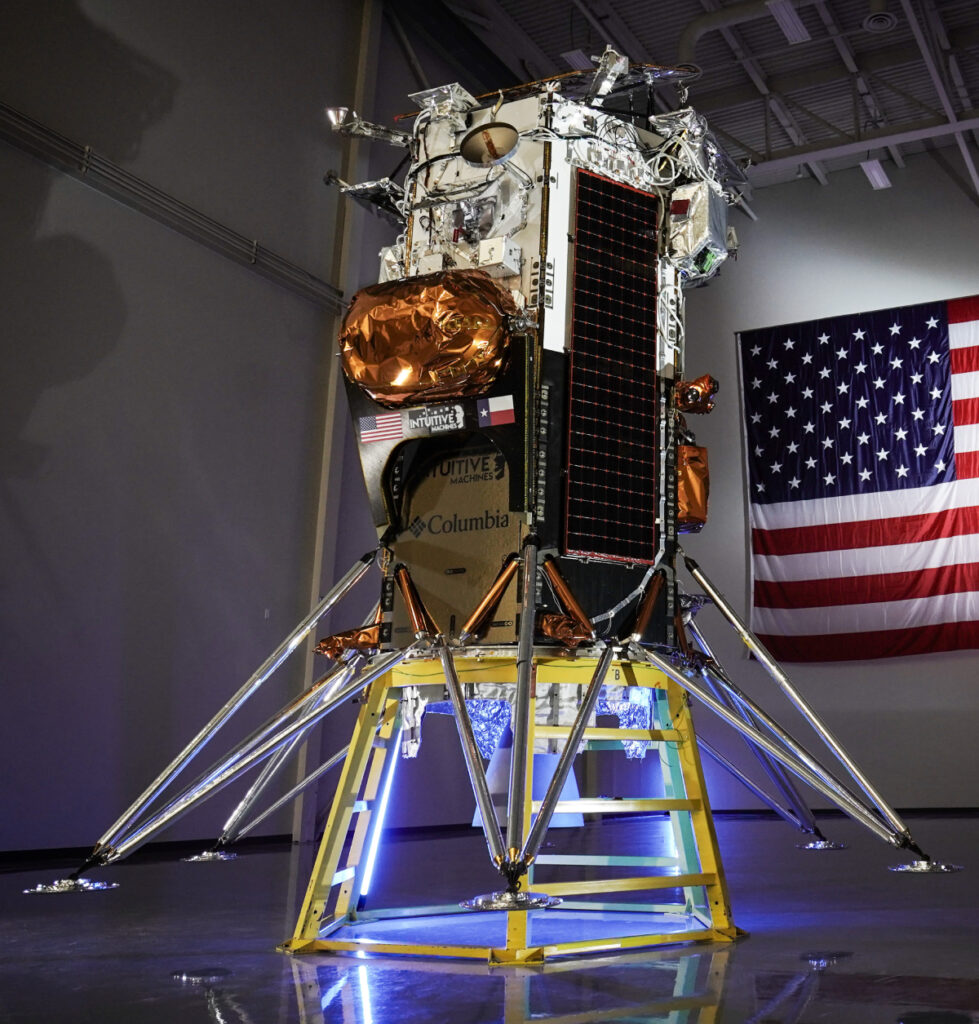At 6:23 p.m. EST on 22 February, the Intuitive Machines’ Nova-C lander Odysseus landed on the Moon. Though the status of the lander is unclear after an extended communications outage, it is transmitting a faint signal, and the company’s chief technology officer, Tim Crain, confirmed it is on the ground.
This was the first soft landing of an American spacecraft on the lunar surface in 52 years, the first commercial lunar landing, and the closest landing yet to the Moon’s south pole. The mission launched in partnership with NASA’s Commercial Lunar Payload Services (CLPS) initiative on 15 February at 1:05 a.m. EST from the Kennedy Space Center in Florida.
The first lunar mission from Intuitive Machines (IM-1) landed near Malapert A crater in the Moon’s south pole region. It carries six scientific payloads from NASA and six non-NASA payloads and is expected to contribute to the Artemis program to return humans to the Moon.

Scouting the South Pole
Malapert A is a 24-kilometer-diameter crater in the Malapert region, roughly 10° north and 3° west of the lunar south pole (about 300 kilometers, or 186 miles). Its location means that the surface is illuminated at low angles and some areas experience little or no sunlight. Landing and operating a spacecraft in such a cold and low-light area will be key for future missions to the Moon’s south pole, a primary target of upcoming lunar exploration.
IM-1 “will give us an opportunity to test our instruments in this very harsh environment where the Sun is always low on the horizon,” said astronomer Susan Lederer, CLPS project scientist at NASA’s Johnson Space Center, during a 12 February press briefing. “The temperature gets quite cold and will help us [learn] what challenges face us in communicating with the Earth when it’s also rather low on the horizon.”

Odysseus carries six NASA payloads. Three of those payloads were designed to aid in navigation, ranging, and measuring distances and velocities on the Moon and aim to demonstrate technologies that could aid future astronauts or a Moon base, Lederer said.
Another payload will learn how to gauge fuel levels in a low-gravity environment, one will seek to understand how the radio environment on the lunar surface might affect scientific experiments, and one will observe how engine plumes change the lunar surface during and after descent.
Odysseus was designed to deploy a camera-equipped CubeSat called EagleCam about 100 meters above the surface before the landing attempt. EagleCam may have captured the first external video of a lunar landing.
Landing More for Less
Mission team members noted that Malapert A is a relatively flat area in which to land at the south pole, and so they did not anticipate any issues with a tilted or upside-down landing, like what happened with Japan’s SLIM (Smart Lander for Investigating Moon) mission a few weeks prior.
“I feel fairly confident that we’re going to be successful softly touching down on the Moon,” Stephen Altemus, president and chief executive of Intuitive Machines, told the New York Times ahead of the launch. That confidence proved well founded with the successful landing.

IM-1 is the first American-launched craft to land softly on the Moon’s surface since Apollo 17 in 1972. It also is the first privately built craft to land on the Moon, after attempts by a different American company as part of CLPS, a Japanese company, and an Israeli nonprofit failed. The mission’s landing success bodes well for the CLPS initiative, which encourages private companies to develop missions that can deliver NASA science to the Moon at low cost.
“Instead of one mission in a decade, it allows for more like 10 commercial missions to the Moon in a decade,” Lederer said. “Instead of four or five instruments in that one decade, it’s more like 4–5 dozen instruments.”
IM-1 is anticipated to operate on the Moon for 7 days. Intuitive Machines plans to launch two more CLPS missions to the lunar south pole region later this year.
—Kimberly M. S. Cartier (@AstroKimCartier), Staff Writer

